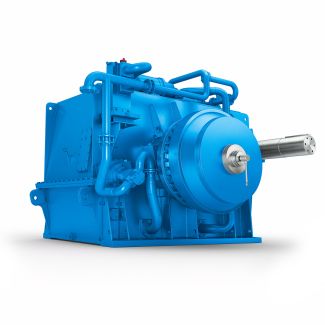B3-KH-11-D eed shaft LSS Oil quan tity B HOil quan tity Bevel-helical gear units B3
In stock
SKU
B3-KH-11-D
$40,285.71
Flender/Flender Gear Units/Bevel-helical gear units B3
rom official statistics of the .. Department of Commerce, are shown in the following tabulation: Principal Market .. exports Share of total (Million dollars) (Percent) Japan 6.7 1.6 Canada 5.9 1.9 West Germany 4.1 1.6 China 3.2 8.3 Soviet Union
of total (Million dollars) (Percent) Japan 6.7 1.6 Canada 5.9 1.9 West Germany 4.1 1.6 China 3.2 8.3 Soviet Union  2.4 6.7 Korea 2.3 6.4 Mexico 1.0 3.0 All other 1.1 3.6 Total 3.7 '1.0 Due to rounding, data may
2.4 6.7 Korea 2.3 6.4 Mexico 1.0 3.0 All other 1.1 3.6 Total 3.7 '1.0 Due to rounding, data may  not add to the total shown. Exports to the Soviet Union were significant in 1 and 1, but have declined
not add to the total shown. Exports to the Soviet Union were significant in 1 and 1, but have declined  in recent years. This decline can be attributed, in part, to strict enforcement of COCOM 8 export regulations which limit .. exports of gear-making machine tools to nonmarket countries. Consequently, the Soviet Union, seeking to acquire the latest technology, has turned to other sources. The lack of hard currency for purchasing machinery from market economies is another factor that has reduced the Soviet Union' purchases of .. machine tools. Competitiveness Major foreign competitors of .. gear-making machine tools and gear metrology industries include West Germany, Japan, Switzerland, and Italy. Shipments of gear-making machine tools from these countries during 1-8 are shown in table -2; 1-8 production and trade data for Switzerland are not available. In 1, Swiss exports of 6 gear-making machine tools were valued at $8.7 million, and imports of 7 units were valued at $4.9 million. During 1-8, .. shipments declined steadily, as compared with those of West Germany and Japan. Since 1, West Germany and Japan have dominated the global production of gear-making machine tools. The value of Japanese shipments were low, relative to those of West Germany, because Japanese machinery was not as technologically advanced as that from West Germany. The Soviet Union and China have number of state enterprises producing gear-making machinery for their domestic industries. East Germany' state enterprises that produce gear- making machine tools have developed an international reputation for good g
in recent years. This decline can be attributed, in part, to strict enforcement of COCOM 8 export regulations which limit .. exports of gear-making machine tools to nonmarket countries. Consequently, the Soviet Union, seeking to acquire the latest technology, has turned to other sources. The lack of hard currency for purchasing machinery from market economies is another factor that has reduced the Soviet Union' purchases of .. machine tools. Competitiveness Major foreign competitors of .. gear-making machine tools and gear metrology industries include West Germany, Japan, Switzerland, and Italy. Shipments of gear-making machine tools from these countries during 1-8 are shown in table -2; 1-8 production and trade data for Switzerland are not available. In 1, Swiss exports of 6 gear-making machine tools were valued at $8.7 million, and imports of 7 units were valued at $4.9 million. During 1-8, .. shipments declined steadily, as compared with those of West Germany and Japan. Since 1, West Germany and Japan have dominated the global production of gear-making machine tools. The value of Japanese shipments were low, relative to those of West Germany, because Japanese machinery was not as technologically advanced as that from West Germany. The Soviet Union and China have number of state enterprises producing gear-making machinery for their domestic industries. East Germany' state enterprises that produce gear- making machine tools have developed an international reputation for good g| Model Type | Bevel-helical gear units B3 |
|---|---|
| Gear Type | Bevel Helical Gear |
| Weight (kg) | 1880.000000 |
| Ratio Range | 1 : 12.5…71 |
| Low Speed Output | Hollow shaft with spline acc. to DIN 5480 |
| Nominal Torque | 63500 Nm |
| Mounting Arrangements | Horizontal mounting position |
| Manufacturer | A. FRIEDR. FLENDER AG |
| Country of Manufacture | Azerbaijan |
| Data Sheet & Drawings | B3-KH-11-D eed shaft LSS Oil quan tity B HOil quan tity Bevel-helical gear units B3 |











